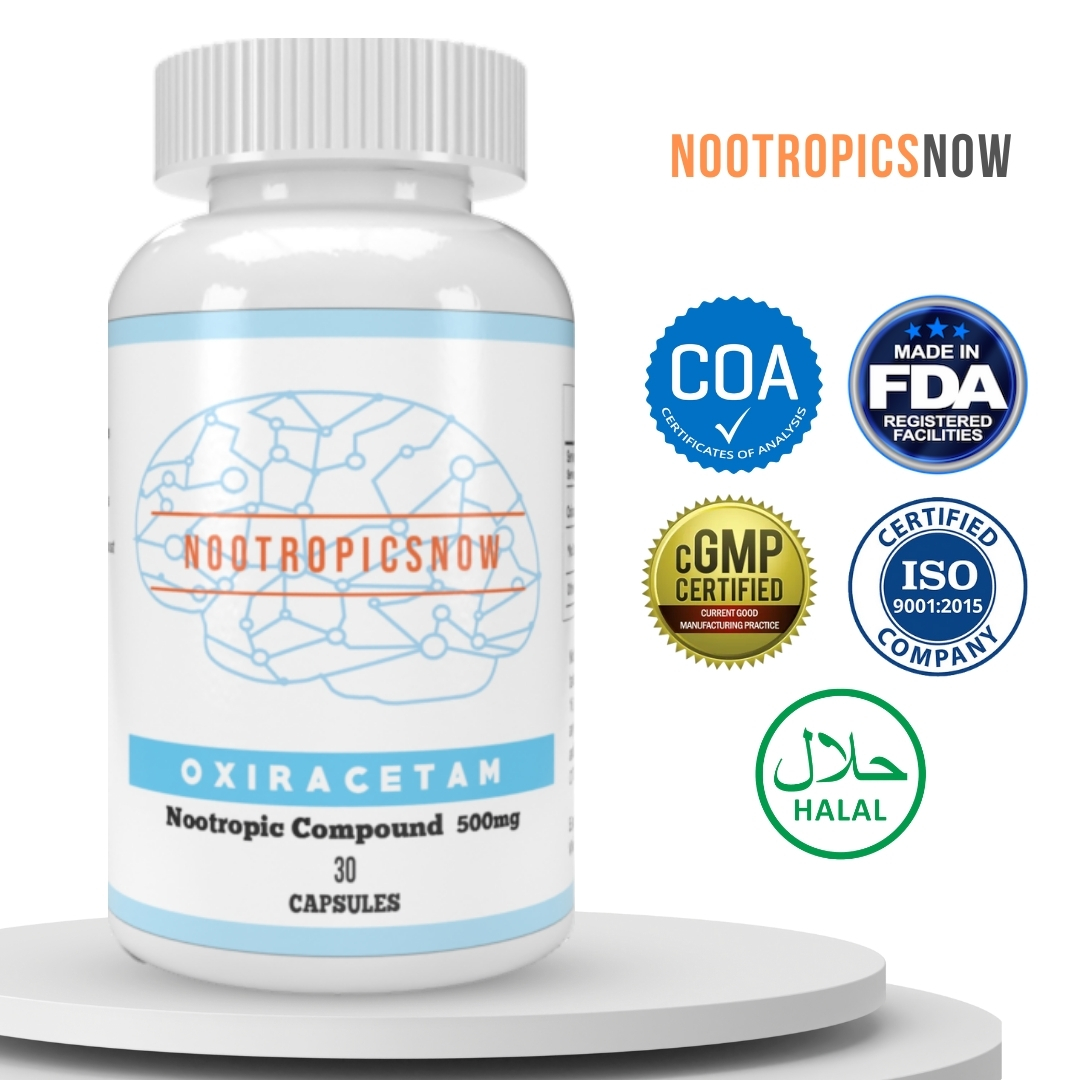Fasoracetam: Memory Effects Explored

`markdown
Fasoracetam Memory Research: A Detailed Exploration
Fasoracetam has emerged as a subject of considerable interest within the nootropics community. This racetam derivative, similar in structure to piracetam but with distinct effects, purportedly enhances cognitive function, particularly memory and learning. This section will explore fasoracetam memory research, examining the available evidence, mechanisms of action, potential benefits, risks, and future research directions. It’s important to note that much of the research is preliminary, and more rigorous human studies are needed.
Understanding Fasoracetam: An Overview

Before delving into the memory-specific research, it is crucial to have a firm grasp on what fasoracetam is and how it is believed to work. Fasoracetam is a synthetic compound belonging to the racetam family of nootropics. Racetams, in general, are known for their potential to enhance cognitive functions. They share a pyrrolidone core structure and are believed to modulate neurotransmitter systems in the brain. However, each racetam derivative exhibits unique pharmacological properties.
Chemical Structure and Properties
Fasoracetam’s chemical formula is 5-[(R,S)-(4-fluorophenyl)(piperidin-2-one)]-1H-pyrrole-2-carboxylic acid. Its molecular weight is approximately 290.29 g/mol. As a synthetic compound, it does not occur naturally. The presence of the fluorine atom is key, potentially impacting its interaction with biological systems. It is typically available in powder form for research purposes or as an ingredient in some dietary supplements.
Mechanism of Action: How Fasoracetam Works
Fasoracetam’s exact mechanism of action is not fully understood, but it’s believed to influence several neurotransmitter systems. Unlike some other nootropics, fasoracetam does not directly bind to neurotransmitter receptors. Rather, it is thought to modulate the release and uptake of neurotransmitters, influencing their concentration in the synaptic cleft. Some proposed mechanisms include:
Understanding these proposed mechanisms is essential to interpreting the research regarding fasoracetam’s effects on memory and other cognitive functions. Further studies are needed to fully elucidate these complex interactions.
Fasoracetam and Memory: Examining the Research
The impact of fasoracetam on memory has been a primary focus of research, particularly in preclinical studies and a limited number of human trials. While the data is not extensive, it points to several potentially beneficial effects.
Preclinical Studies: Animal Models
Much of the early research on fasoracetam’s memory-enhancing properties was conducted using animal models, primarily rats. These studies provide valuable insights into the potential mechanisms of action and therapeutic applications.
It is important to consider the limitations of animal studies. While they provide valuable insights, results obtained in animals do not always translate directly to humans. Factors such as species differences, dosage, and experimental conditions can influence the outcome. Thus, human studies are necessary to confirm the findings from animal research.
Human Studies: Limited but Promising
Human studies on fasoracetam’s effects on memory are relatively scarce. Currently, research is limited, and the few available studies have focused on specific populations.
| Study Aspect | Detail |
|---|---|
| ——————- | ————————————————————- |
| Study Population | Adolescents with ADHD and specific mGluR gene mutations |
| Intervention | Fasoracetam |
| Outcome | Significant improvement in ADHD symptoms and cognitive function |
| Key Finding | Efficacy in genetically defined ADHD subgroup |

View Product
The scarcity of human studies is a significant limitation in understanding fasoracetam’s true potential for enhancing memory. Larger, well-controlled clinical trials are needed to confirm the findings from animal studies and to determine the optimal dosage, safety profile, and efficacy of fasoracetam in diverse populations.
Potential Benefits of Fasoracetam for Memory
Based on the available evidence, fasoracetam could offer several potential benefits for memory, although more research is necessary to confirm these effects.
Risks and Side Effects of Fasoracetam
As with any nootropic, it’s essential to consider the potential risks and side effects associated with fasoracetam. While it is generally considered safe at recommended dosages, adverse effects can occur.
Before using fasoracetam, it is crucial to consult a healthcare professional, particularly if you have any pre-existing medical conditions or are taking other medications. Responsible use involves starting with a low dosage and gradually increasing it as needed, while carefully monitoring for any side effects.
For those looking for other options to help support memory and overall cognitive function, consider exploring Lions Mane Mushroom:

View Product
Future Research Directions
Further research is needed to fully understand fasoracetam’s potential for memory enhancement and to establish its safety and efficacy. Some key areas for future research include:
Conclusion: Fasoracetam Memory Research
Fasoracetam represents a promising nootropic with the potential to enhance memory and cognitive function. Preclinical studies have shown that it can reverse memory impairments, enhance LTP, and improve working memory. However, human studies are limited, and more research is needed to confirm its efficacy and safety.
While fasoracetam is generally considered safe, potential risks and side effects should be considered. Responsible use involves consulting a healthcare professional, starting with a low dosage, and monitoring for any adverse effects. Future research should focus on conducting large-scale clinical trials, elucidating the mechanism of action, assessing long-term safety, and optimizing dosage.
Overall, while the research is promising, further evidence is needed before fasoracetam can be definitively recommended as a memory-enhancing nootropic. Careful consideration of the available evidence, potential risks, and individual factors is essential before considering the use of fasoracetam.
`
Delving Deeper into Fasoracetam’s Impact on Memory: Preclinical Studies
While human clinical trials on fasoracetam’s memory-enhancing effects are still limited, preclinical studies, particularly those involving animal models, provide valuable insights into its potential mechanisms and efficacy. These studies allow researchers to examine fasoracetam’s impact on memory under controlled conditions, offering a foundation for future human trials.
Baclofen-Induced Memory Impairment Reversal
One notable area of preclinical research has focused on fasoracetam’s ability to reverse memory impairment induced by baclofen, a GABA-B receptor agonist. Baclofen is known to impair cognitive function, particularly memory, by over-activating GABA-B receptors in the brain.
A study published in the European Journal of Pharmacology investigated the effects of fasoracetam on baclofen-induced memory deficits in rats. The researchers found that administering fasoracetam significantly improved the rats’ performance on memory tasks, such as the Morris water maze and the passive avoidance test. This suggests that fasoracetam can counteract the memory-impairing effects of baclofen by modulating GABA-B receptor activity or by influencing other neurotransmitter systems involved in memory consolidation and retrieval.
Cholinergic System Modulation
Fasoracetam’s ability to modulate the cholinergic system is another key aspect of its potential memory-enhancing effects. The cholinergic system, which uses acetylcholine as its primary neurotransmitter, plays a vital role in learning, memory, and attention.

View Product
Studies have shown that fasoracetam can increase the release of acetylcholine in the brain, thereby improving cholinergic neurotransmission. This effect is likely mediated by fasoracetam’s interaction with cholinergic receptors or by its influence on acetylcholine synthesis or breakdown.
For example, a study published in Neuropharmacology investigated the effects of fasoracetam on acetylcholine release in rat brain slices. The researchers found that fasoracetam significantly increased acetylcholine release in the hippocampus, a brain region crucial for memory formation. This finding supports the hypothesis that fasoracetam enhances memory by boosting cholinergic neurotransmission in key brain areas involved in learning and memory.
Glutamate Receptor Modulation
In addition to its effects on the cholinergic system, fasoracetam also interacts with glutamate receptors, particularly metabotropic glutamate receptors (mGluRs). Glutamate is the primary excitatory neurotransmitter in the brain and plays a critical role in synaptic plasticity, which is the ability of synapses to strengthen or weaken over time. Synaptic plasticity is thought to be the cellular basis of learning and memory.
Fasoracetam has been shown to modulate the activity of mGluRs, which can influence synaptic plasticity and cognitive function. Specifically, fasoracetam has been found to potentiate the activity of mGluR5 receptors, which are involved in long-term potentiation (LTP), a form of synaptic plasticity that is essential for memory formation.
Long-Term Potentiation (LTP)
Research indicates that fasoracetam can enhance long-term potentiation (LTP) in the hippocampus. LTP is a persistent strengthening of synapses based on recent patterns of activity. It is a crucial cellular mechanism underlying learning and memory. By facilitating LTP, fasoracetam may promote the formation and consolidation of memories.
Neuroprotection
Furthermore, some studies suggest that fasoracetam may have neuroprotective properties, protecting brain cells from damage and degeneration. This neuroprotective effect may contribute to its potential memory-enhancing effects by preserving the integrity of brain structures involved in learning and memory.
Implications for Alzheimer’s Disease
Collectively, these preclinical studies provide strong evidence that fasoracetam has the potential to enhance memory and protect against cognitive decline. While further research is needed to confirm these findings in humans, these studies suggest that fasoracetam may be a promising therapeutic agent for conditions such as Alzheimer’s disease, which is characterized by memory loss and cognitive impairment.

View Product
Understanding the Nuances: Exploring the Benefits and Limitations
When considering fasoracetam for memory enhancement, it’s crucial to weigh both its potential benefits and limitations. Understanding these aspects allows individuals and researchers to approach fasoracetam use with realistic expectations and make informed decisions based on the available evidence.
Potential Benefits
Limitations
Dosage and Administration: Guidelines for Safe and Effective Use
Optimal dosage and administration protocols are crucial for maximizing the benefits of fasoracetam while minimizing the risk of side effects. Due to the limited human research, establishing precise guidelines is challenging, and recommendations are primarily based on anecdotal evidence and extrapolation from animal studies.

View Product
Dosage
The typical dosage range for fasoracetam is between 10mg to 100mg per day, usually divided into two or three administrations to maintain stable blood levels. For example, a common regimen might involve taking 20mg in the morning and 20mg in the afternoon.
Administration
Cycling
To prevent the development of tolerance and maintain the effectiveness of fasoracetam, many users recommend cycling its use. This involves taking fasoracetam for a period of time (e.g., several weeks or months) followed by a break of equal or longer duration.
Interactions
Fasoracetam may interact with other drugs or supplements, particularly those that affect the cholinergic, glutamatergic, or GABAergic systems. It is essential to consult with a healthcare professional before using fasoracetam, especially if you are taking other medications.
Conclusion
While fasoracetam holds promise as a cognitive enhancer, it’s essential to approach its use with caution, awareness of its limitations, and adherence to appropriate dosage and administration protocols. Further research is needed to fully elucidate its mechanisms of action, efficacy, and safety profile in humans.

View Product


